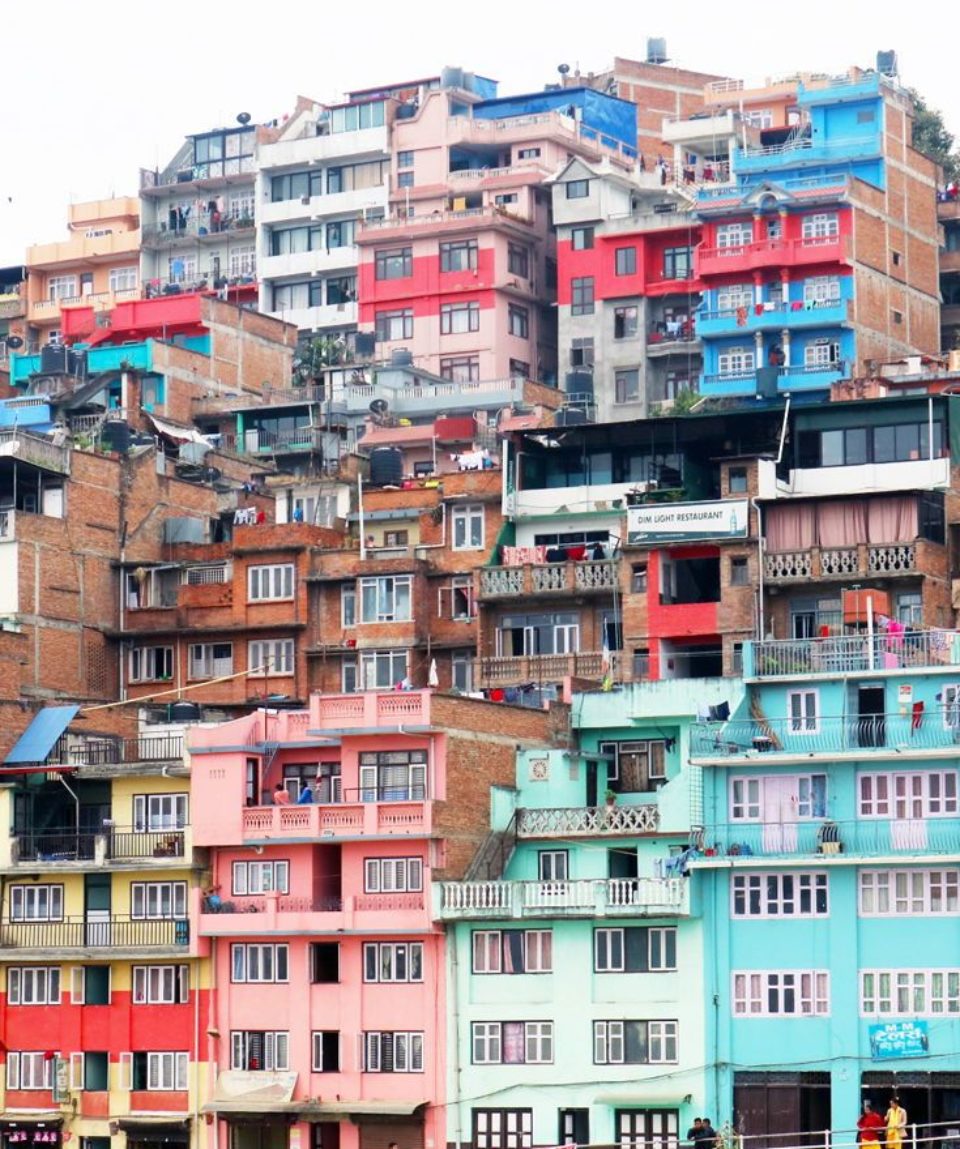Kirtipur Day Tour
fromKirtipur Day Tour – One of the oldest cities in Nepal is Kirtipur, which was formerly ruled by the Newars. Kritipur should be on your list if you have limited time to get to Kathmandu. Kirtipur allows you to learn about a traditional Newari village that not many people are aware of. The name Kirtipur means “the city of fierceness.” Kirtipur’s history began in 1099 AD when it was a part of Lalitpur.
-
Reviews 0 Reviews0/5
-
Vacation Style Holiday Type
-
Activity Level Fairly Easy
-
Group Size Medium Group
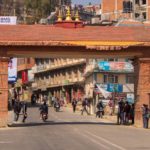 Kirtipur Gate and Kirtipur View Point
Kirtipur Gate and Kirtipur View Point
Our day tour starts from the Kirtipur Gate where we commence our tour and start walking our way to Kirtipur View Point. From the Kirtipur Gate, at Naya Bazar, at the foot of Kirtipur (where there is a bus park), we begin walking.
We will reach a football field soon and there our first destination lies. This spot is our viewpoint which lets us see an amazing view of the entire town.
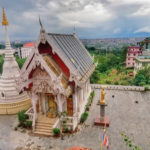 Nagar Mandap Shree Kirti Bihar
Nagar Mandap Shree Kirti Bihar
From the viewpoint, we will head to the hall in front of us and turn left on Kirtipur ring road or the path that is going up. There will be stairs leading to the beautiful Thai Buddhist temple of Nagar Mandap Shree Kirti Bihar, also known as Kirtipur Thai Bihar.
This monastery is built in the traditional Thai architectural style. Kirtipur Thai Bihar was inaugurated by the Supreme Patriarch of Thailand in 1995. This place houses a typical yet unique Buddhist aesthetic that can’t be found anywhere in Nepal.
 Chilancho Stupa
Chilancho Stupa
From the monastery we will head back to the main road and continue up to the platform viewpoint; there, we’ll get a wonderful view of Nagar Mandap Shree Kirti Bihar from above.
Leaving the viewpoint, we will cross Kirtipur King road and take the stairs in front of us. Crossing many small temples and chaityas (prayer halls), we will see a stone temple with two lion guardians – the Shakya Muni Boudha Mandir.
In front of this temple lies a series of steep stairs. Taking the stairs, we’ll cross a courtyard and above the courtyard is the Chilancho stupa.
Chilancho stupa is probably the most gorgeous place in Kirtipur and one of the most beautiful places in the Kathmandu Valley.
The oldest structure in Kirtipur is called Chilancho, which in Nepali means “Immortal god on the hill.” Although the actual age of this monument is unknown, it is thought that it was erected in the third century BCE by Emperor Ashoka, making Chilancho possibly 2,300 years old. Inscriptions bearing the Nepali date “635” on the stupa were discovered. Additionally, there is evidence of restoration projects from 1533 and 1668.
The Swayambhunath stupa’s construction is shared by the about 10-meter-tall Chilancho stupa (with also a Vajra thunderbolt in front of it as well). There are four lesser stupas at each corner of the foundation of the Chilancho stupa.
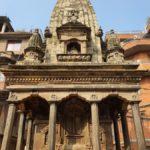
Lohan Dega (Lodegal)
We will retrace our steps till we reach the courtyard that we crossed. Towards the leftward direction of this courtyard lies Lohan Dega.
A Buddhist temple in the Shikhara architecture called Lohan Dega, also called Lodegal or Lon Degah, is devoted to the Triratna (Buddha, Dharma, and Sangha). The stone temple is what Lohan Dega signifies. It was constructed in 1664 under the reign of the Mallas.
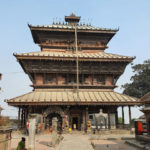 Bagh Bhairab temple and Yuddha Park
Bagh Bhairab temple and Yuddha Park
From Lodgeal, we will travel across a sizable pond to the Bagh Bhairab temple. One of the most significant and well-known Hindu temples in Kirtipur is the Bagh Bhairab temple. The three-story shrine is devoted to Kirtipur’s protector Bagh Bhairab. Bhairav is Lord Shiva’s worst incarnation. To avoid confusion with Kaal Bhairav, Sweta Bhairav, or Akash Bhairav in Kathmandu, it is the only temple in the Kathmandu Valley that is dedicated to the tiger form of Bhairav (in Nepali, “Bagh” means “tiger”).
According to tradition, some young girls were tending to their sheep. They ventured into the jungle one day while creating a clay tiger idol in order to look for a unique leaf to serve as the animal’s tongue. When they returned, the sheep were gone, but there were still bones on the ground and blood covering the tiger statue. They thought Bhairab had hidden within the idol and was consuming the sheep there. It is rumored that Hindus currently worship the tongueless tiger idol within the temple.
Some of the shrines near the Bagh Bhairab temple in Kirtipur date to the third century, but the temple itself is from the 16th century. The swords used in the Kirtipur war by the Gorkhali army of King Prithvi Narayan Shah still hang from the top of the Bagh Bhairab shrine.
Right behind the temple is the Yuddha park, which houses many stone sculptures where we will spend some time.
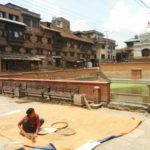 Narayan Temple and Dey Pukhu
Narayan Temple and Dey Pukhu
Exiting the park, we will head towards a large courtyard that has a huge pond and a white temple in front of it.
The Lord Vishnu-focused Narayan temple is a white Mughal-style building. Dey Pukhu, a sizable pond, served as Kirtipur’s historic water reservoir. Dey Pukhu translates to the country pond. Even now, people still wash their clothing in pond water. The Pond is made of dung and lacks any pumps or drills. The Pond’s sole source of water is rainfall.
Now, we will stop to have some traditional Newari food. Kirtipur is also known for its fabulous Newari food. The food itself is an exploration! The most famous Newari dishes offered in Kirtipur are the Samay Bhaji, Wo Bara, chatamari, Yomari, chhoila, Sapu micha, and the homemade alcoholic beverage called “Aila” or “Rakshi” .Also, Kirtipur is home to extreme food items made up of the spinal cord, ears, brain, tongue, eye, intestines, and blood. We will try most of these foods before resuming our exploration of the wonderful Kirtipur.
 Uma Maheshwar Temple
Uma Maheshwar Temple
We’ll visit the Uma Maheswhor temple, also known as the Bhavani Shankar temple after we’ve enjoyed our great meal. Uma Maheshwar is a three-story temple with several carvings of the Kama Sutra that was constructed in 1655 (during the Malla era).
Lord Shiva and his wife, Parvati, are the patron saints of this lovely temple. You may take in the 360-degree panoramic views of the Kathmandu Valley from there.
Saraswati Temple
Saraswati Temple lies near Uma Maheshwar. Speaking by its name, this temple is dedicated to Saraswati, the Hindu Goddess of knowledge, music, art, speech, wisdom, and learning. Less visited, the Saraswati temple also offers fine views over Kathmandu.
Indrayani Devi
We’ll proceed to the Indrayani Devi temple by using the short path that leads from the Saraswati temple. Goddess Indrayani, one of the Ajimas guarding the Kathmandu Valley, is the subject of the shrine known as Indrayani Devi. Every year, in the months of November and December, the goddess Indrayani is honored.
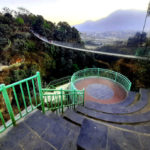 The Suspension Bridge
The Suspension Bridge
The suspension bridge is one of Kirtipur’s most well-known landmarks. We shall proceed to the suspension bridge after leaving Indrayani Devi. This extensive suspension connects Tinthana/Chandragiri to Kirtipur. The view is very breathtaking. You won’t feel like you’re in Kathmandu anymore when you’re surrounded by nature and the Balkhu Khola is flowing beneath you.
It will already be evening by the time we reach the bridge. After spending some time, hearing stories of Kirtipur’s history, we will bid our farewell to Kirtipur and return.
Some Photos
